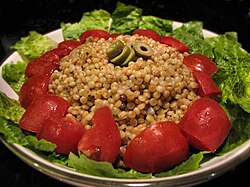
Couscous is a Berber dish of small steamed balls of crushed durum wheat semolina that is traditionally served with a stew spooned on top. Pearl millet and sorghum, especially in the Sahel, and other cereals can be cooked in a similar way and the resulting dishes are also sometimes called couscous. Pearl or Israeli couscous, properly known as ptitim, is a type of pasta.

Pasta is a type of food typically made from an unleavened dough of wheat flour mixed with water or eggs, and formed into sheets or other shapes, then cooked by boiling or baking. Rice flour, or legumes such as beans or lentils, are sometimes used in place of wheat flour to yield a different taste and texture, or as a gluten-free alternative. Pasta is a staple food of Italian cuisine.

Spaghetti is a long, thin, solid, cylindrical pasta. It is a staple food of traditional Italian cuisine. Like other pasta, spaghetti is made of milled wheat and water and sometimes enriched with vitamins and minerals. Italian spaghetti is typically made from durum wheat semolina. Usually the pasta is white because refined flour is used, but whole wheat flour may be added. Spaghettoni is a thicker form of spaghetti, while capellini is a very thin spaghetti.

Vegetarian cuisine is based on food that meets vegetarian standards by not including meat and animal tissue products. For lacto-ovo vegetarianism, eggs and dairy products are permitted. For lacto vegetarianism, dairy products are permitted but eggs are not, and for ovo vegetarianism eggs are permitted but dairy products are not. The strictest form of vegetarianism is veganism, which excludes all animal products, including dairy, honey, and some refined sugars if filtered and whitened with bone char. There are also partial vegetarians (flexitarians), such as pescetarians who may eat fish but avoid other types of meat.

Corn flakes, or cornflakes, are a breakfast cereal made from toasting flakes of corn (maize). The cereal, originally made with wheat, was created by William Kellogg in 1894 for his brother John Kellogg. John Kellogg wanted a food that would be healthy for the patients of the Battle Creek Sanitarium in Michigan where he was superintendent. The breakfast cereal proved popular among the patients, but Will Kellogg wanted to add sugar to increase the popularity. John Kellogg did not approve of this, so Will Kellogg started his own company Kellogg Company to produce corn flakes for the wider public. A patent for the process was granted in 1896, after a legal battle between the two brothers.
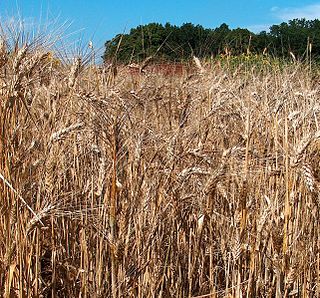
Durum wheat, also called pasta wheat or macaroni wheat, is a tetraploid species of wheat. It is the second most cultivated species of wheat after common wheat, although it represents only 5% to 8% of global wheat production. It was developed by artificial selection of the domesticated emmer wheat strains formerly grown in Central Europe and the Near East around 7000 BC, which developed a naked, free-threshing form. Like emmer, durum wheat is awned. It is the predominant wheat that grows in the Middle East.

Semolina is the coarse, purified wheat middlings of durum wheat mainly used in making couscous, pasta, upma, and sweet puddings. The term semolina is also used to designate coarse middlings from other varieties of wheat, and sometimes other grains as well.

Chef Boyardee is a brand of canned pasta products sold internationally by Conagra Brands. The company was founded by Italian immigrant Hector Boiardi in Milton, Pennsylvania, U.S., in 1928.
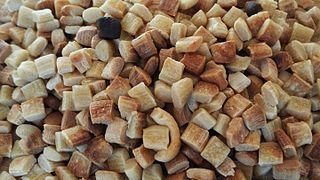
Farfel is small pellet- or flake-shaped pasta used in Ashkenazi Jewish cuisine. It is made from an egg noodle dough and is frequently toasted before being cooked. It can be served in soups or as a side dish. In the United States, it can also be found pre-packaged as egg barley.

Arab cuisine is the cuisine of the Arabs, defined as the various regional cuisines spanning the Arab world, from the Maghreb to the Fertile Crescent and the Arabian Peninsula. The cuisines are often centuries old and reflect the culture of great trading in spices, herbs, and foods. The three main regions, also known as the Maghreb, the Fertile Crescent, and the Arabian Peninsula, have many similarities, but also many unique traditions. These cuisines have been influenced by the climate, cultivating possibilities, as well as trading possibilities.

Levantine cuisine is the traditional cuisine of the Levant, known in Arabic as the Bilad al-Sham and Mashriq, which covers a large area of the Eastern Mediterranean. It continues to carry an influentially mainstream character in a majority of the dishes today. It is found in the modern states of Cyprus, Jordan, Lebanon, Israel, Palestine, Syria, and parts of southern Turkey near Adana, Gaziantep, and Antakya. Conversely, some of the dishes listed below may have early origins in neighboring regions, but have long since become traditions in the Levant.

Farfalle are a type of pasta commonly known as bow-tie pasta or butterfly pasta. The name is derived from the Italian word farfalle (butterflies). In the Italian city of Modena, farfalle are known as strichetti. A larger variation of farfalle is known as farfalloni, while the miniature version is called farfalline. Farfalle date back to the 16th century in the Lombardy and Emilia-Romagna regions of Northern Italy.

Italian cuisine is a Mediterranean cuisine consisting of the ingredients, recipes and cooking techniques developed across the Italian Peninsula since antiquity, and later spread around the world together with waves of Italian diaspora.

Egg barley or egg drops, called tarhonya in Hungarian or tarhoňa in Slovak, is an egg-based pasta, often found in Hungary and Central Europe.

Israeli cuisine comprises both local dishes, adopted Arab dishes, and dishes brought to Israel by Jews from the Diaspora. Since before the establishment of the State of Israel in 1948, and particularly since the late 1970s, an Israeli Jewish fusion cuisine has developed.

Tunisian cuisine, the cuisine of Tunisia, is a blend of Mediterranean and Berber cuisines. Its distinctive spiciness comes from the many civilizations which have ruled the land now known as Tunisia: Romans, Vandals, Byzantines, Arabs, Spanish, Turkish, Italians (Sicilians), French, and the native Punics-Berber people. Many of the cooking styles and utensils began to take shape when the ancient tribes were nomads. Nomadic people were limited in their cooking implements by what pots and pans they could carry with them. The Tunisian tagine is very different from the Algerian or Moroccan dish. It is a type of a pie dish, made out of eggs, meat and vegetables, similar to the Italian frittata or the eggah.
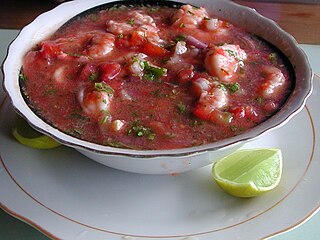
Ecuadorian cuisine is diverse, varying with altitude, and associated agricultural conditions. Beef, chicken, and seafood are popular in the coastal regions and are typically served with carbohydrate-rich foods, such as rice accompanied with lentils, pasta, or plantain, whereas in the mountainous regions pork, chicken, beef and cuy are popular and are often served with rice, corn, or potatoes. A popular street food in mountainous regions is hornado, consisting of potatoes served with roasted pig. Some examples of Ecuadorian cuisine in general include patacones, llapingachos, and seco de chivo. A wide variety of fresh fruit is available, particularly at lower altitudes, including granadilla, passionfruit, naranjilla, several types of banana, uvilla, taxo, and tree tomato.

Bissli is an Israeli wheat snack produced by Nestle-owned Osem. Bissli is Osem's leading snack brand after Bamba.
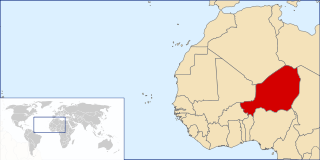
The cuisine of Niger draws on traditional African cuisines. Various spices are used and meals include grilled meat, seasonal vegetables, salads, and various sauces are some of the foods consumed. Meals in Niger usually start with colorful salads made from seasonal vegetables. Moringa leaves are a favorite for a salad.

Bulgur is a cereal food made from the cracked parboiled groats of several different wheat species, most often from durum wheat. It originates in Middle Eastern cuisine.
